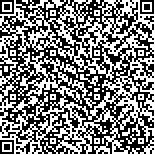下载中心
优秀审稿专家
优秀论文
相关链接
摘要

为了减少近地表大气逆温对地表温度遥感反演精度的影响,提出在晴空的地表温度“通用劈窗算法”模型中增加一个温度改正项来实现。在建立该误差改正项时,利用正常条件下的通用劈窗算法系数和具有不同逆温强度的逆温廓线,并结合大气辐射传输模型MODTRAN计算,得到近地表大气逆温条件下的地表温度反演误差,并在分析了该误差值与相应的逆温强度的关系后,发现该温度改正项可以表示为近地表大气逆温强度的二次项函数。为了进一步提高地表温度的反演精度,将地表温度和大气水汽含量进行分组,分别针对每个分组来确定温度改正项方程的系数。模拟结果表明,在逆温强度为1.7 K/100 m时,该温度改正项可以使地表温度的反演精度提高0.44 K。利用内蒙古海拉尔试验站的实测数据对地表温度反演结果进行了验证,在近地表大气存在逆温的条件下,该方法能提高地表温度的遥感反演精度0.47 K。但是,由于本文提出的方法需要已知大气温度廓线来计算大气逆温强度,因此在实际应用中该方法受到了一定的限制。
Land Surface Temperature (LST), which controls the basic interactions between the Earth's surface and the atmosphere, is significant in many aspects. By far, many algorithms have been proposed to retrieve LST from different satellite thermal infrared data. However, the influence of Air Temperature Inversion (ATI) on LST retrieval has not been considered in the development of existing algorithms. This study aims to analyze and reduce the influence of ATI on LST retrieval. Considering that the Generalized Split-Window (GSW) algorithm has been widely used, we choose this algorithm to retrieve LST in this study.Furthermore, considering that the LST retrieval error increases when ATI intensity increases, we add an error correction related to intensity to the GSW algorithm. To determine the relationship between the LST retrieval error and the ATI intensity, we manually change the normal profile in the Thermodynamic Initial Guess Retrieval (TIGR) database into the ATI profile with the intensity ranging from 1.0 K/100 m to 5.0 K/100 m and the step being 1.0 K/100 m because the intensities of the existing ATI profiles in the TIGR database are not large enough. The LST errors are calculated using the changed ATI profiles and the GSW coefficients derived from normal conditions. To improve the accuracy of the LST retrieval, we divide LST and Water Vapor Content (WVC) into different groups. After calculating the LST retrieval errors of all groups, we find that the LST retrieval error could be expressed as a quadratic function of ATI intensity. The coefficients that correspond to the correction of each group are derived by fitting the LST retrieval errors with various ATI intensities.Results show that the monomial coefficient and the constant of the quadratic function increase when the LST increases while the quadratic coefficient does not change significantly. In addition, the coefficients do not change regularly when the WVC increases. To test whether the proposed method could be used to reduce the influence of ATI on LST retrieval accuracy, we use both simulated data and in situ data. Simulation results show that the LST retrieval accuracy could be improved by 0.44 K when the ATI intensity is 1.7 K/100 m. In situ measurements at the Hailar site are also used to test this method. Results show that the proposed method could improve the LST retrieval accuracy by 0.47 K for the GSW algorithm in atmospheres with ATI.This study aims to add an error correction to the GSW algorithm to improve LST retrieval accuracy when the atmosphere shows ATI. Validation using both simulated data and in situ measurements indicates that the proposed method could effectively reduce the influence of ATI on LST retrieval. However, the application of the proposed method is restricted by the air temperature profile that it requires. A model by which the ATI could be determined from satellite data is expected to be developed in a future study.

